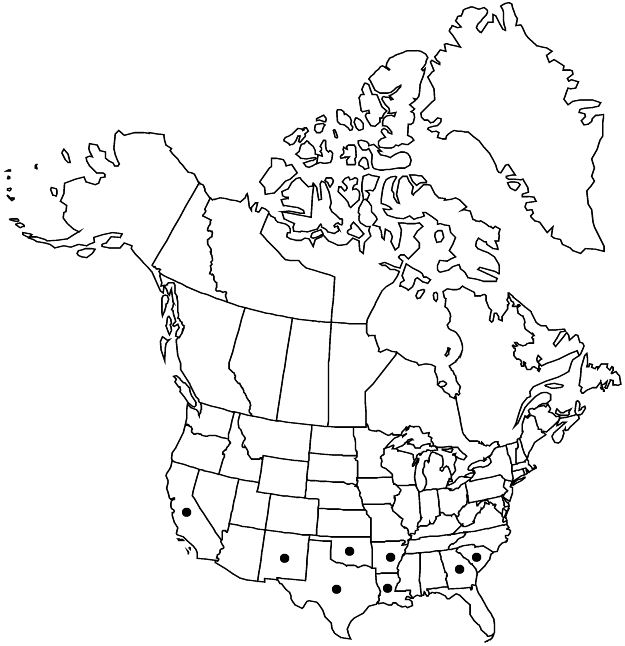Tamarix gallica
Sp. Pl. 1: 270. 1753.
Common names: French tamarisk
IntroducedWeedy
Revision as of 22:23, 5 November 2020 by imported>Volume Importer
Shrubs or trees, to 5 m. Leaves: blade lanceolate, 1.5–2 mm. Inflorescences 2–5 cm × 4–5 mm; bract exceeding pedicel, not reaching calyx tip. Flowers 5-merous; sepals 0.5–1.5 mm, margins entire or subentire; petals elliptic to ovate, 1.5–2 mm; antisepalous stamens 5, filaments confluent with nectar disc lobes, all originating from edge of disc. 2n = 24.
Phenology: Flowering spring–early fall.
Habitat: Ocean shorelines, riverways, sandy soil
Elevation: 0–300 m
Distribution

Introduced; Ark., Calif., Ga., La., N.Mex., Okla., S.C., Tex., s Europe, introduced also in Mexico (Chihuahua, Durango, Sinaloa), South America (Argentina).
Discussion
Tamarix gallica is morphologically very similar to, and may form hybrids with T. canariensis.
Selected References
None.
Lower Taxa
None.